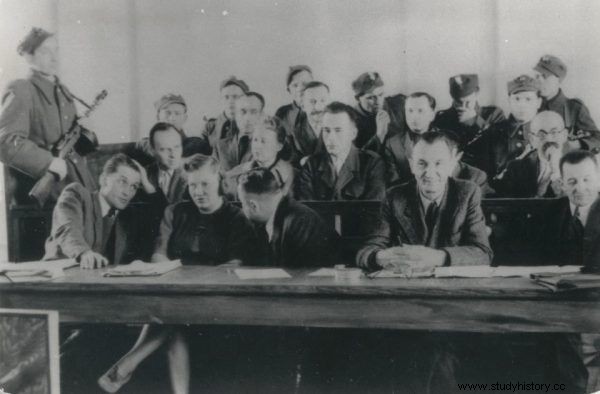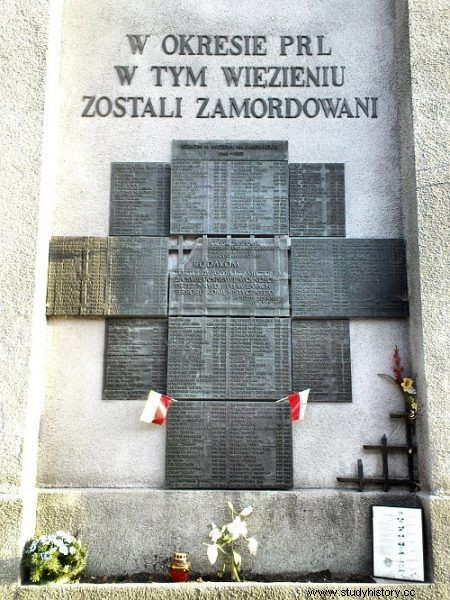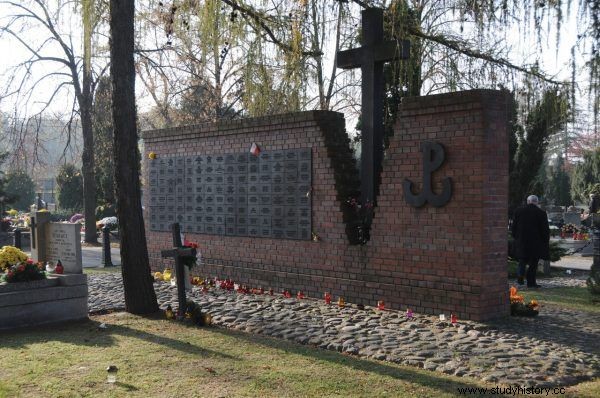The court murders in Stalinist Poland took various forms. Some of the falsely accused were sentenced to death in express trials held in their own cells. During the trial, the accused was sitting ... on the toilet.
While in the 1940s and 1950s the newspapers talked about "socialist rule of law," in many prisons across the country, patriots waited in line for a trial, the verdict of which was usually a foregone conclusion. Some of them, such as the hero Witold Pilecki, managed to reach the courtroom. There, on the basis of evidence of guilt prepared by the prosecutor's office and the security services, they were sentenced to long prison terms or the death penalty.
Some, however, could only exercise their right to a fair trial in their own cell. One of such people was General Stanisław Skalski (1915–2004), a fighter ace sentenced to death, a record holder among Poles in the number of downed Third Reich planes . Luckily, the sentence of April 7, 1950 was not carried out, and his replacement for life imprisonment was won by the mother of the famous pilot.

The dock of defendants in the trial of Witold Pilecki. There was much less space during the toilet trials (photo:public domain).
Judge on bunk, accused on toilet
During cell trials, the judge, prosecutor, and other "guests" were seated on beds, tables, or stools, if the room offered such luxuries. The defendant had only left to seat on the toilet bowl . Such trials did not last long, did not offer any possibility of defense, and even when attempted, the "evidence" gathered by the security services was too strong.
Apart from General Skalski, the sentences in such conditions were heard, among others, by Home Army soldiers Witalis Skorupka (born 1923) and Jerzy Woźniak (1923–2012). The first of them, despite being sentenced to death, lived to this day. He was pardoned by Bolesław Bierut himself, who learned that Skorupka took part in actions against the liquidators of the ghetto in Siedlce.
Jerzy Woźniak can speak of even greater happiness. He avoided execution at the hands of the communists as his sentence was changed to life imprisonment and he was allowed to leave the prison in 1956. In turn, in 2010, he was supposed to be on board the presidential plane flying to Smolensk, which crashed during a landing attempt, but did not fly due to sciatica.
Give the man and the proof will be found
In the mid-1950s, Mieczysław Widaj, a judge in Skalski's trial, said:" These were not cases without evidence." After all, no judge would defile the "socialist rule of law" by convicting someone for no reason. "Herrings" (investigators) obtained evidence of guilt with ease. As the famous aviator said years later, was encouraged to testify with " fists, kicks, wire on the legs ” .

A plaque commemorating the victims of the prison on Rakowiecka Street (photo:Jolanta Dyr, CC BY-SA 3.0).
The interrogations often lasted several dozen hours. This type of investigation method called "escort" - officers changed and did not allow the victim to rest. It wasn't the only way to break a suspect. There are known cases of jamming the genitals with a drawer, tearing nails, electric shocks, and even seating on an upside down stool to damage the stools .
The most famous places of such execution are the prison on ul. Rakowiecka in Warsaw and the building at ul. Chałubiński, which was the seat of the Main Information Board, i.e. military counterintelligence. Many prisoners agree that the methods he used were far more cruel than those used by "herring" from the civil security apparatus. So what was going on there? One can only guess. The location of the GZI in the state hierarchy meant that this institution could hide its methods of operation much better and feel more impunity.

Quarters in the meadow at the Powązki Military Cemetery, where many victims of the Mokotowski Prison on Rakowiecka are buried (photo:Zlisiecki at pl.wikipedia, CC BY-SA 3.0).
It is not difficult to guess that after spending long months in dark, unheated and damp cells, Polish patriots stopped contradicting the theses made up by the fixers of the people's power. Even though a large part of the judicial system knew how the statements were extracted from the suspects , most often it was put off in silence.
The indictments read out were often absurd in the part listing the accusations. The soldiers of the Home Army were almost automatically convicted of espionage, and some priests, such as Fr. Zygmunt Kaczyński, attempting to change the system by force. Theoretically, an independent court played only a servile role to the prosecutor's office, the security apparatus and the party.
And a warm job as a reward
After Władysław Gomułka became the first secretary of the Central Committee of the Polish United Workers' Party in 1956, attempts were made to crack down on lawyers and security officers who violated the rule of law. On the wave of the thaw, the so-called Mazur's commission, whose task was to determine the guilty parties. In practice, its effectiveness was definitely insufficient. People like the aforementioned Mieczysław Widaj often avoided responsibility.

The article was based, inter alia, on on the book by Tadeusz Płużański entitled "List of torturers."
Many of those involved in the court murders simply "went under the hat" (that is, to a civilian), under which often attractive work awaited them. For example, he became a legal advisor, probably a very good one. As General Skalski said, the soup he was given just before starting the trial was still warm afterwards . The judging judge must have been a very proficient lawyer.
